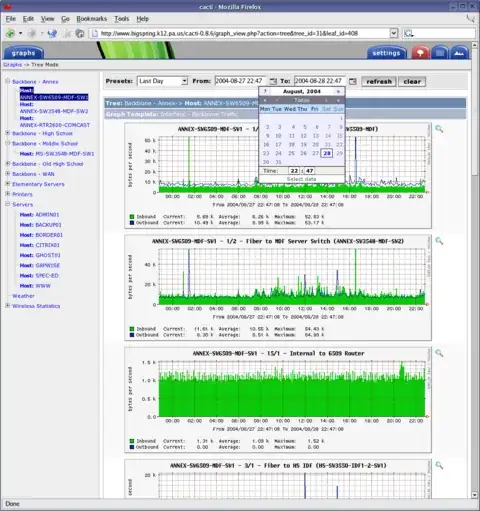Where I work at, we have a bunch of Cisco Catalyst 3560 switches (plus two routers), which no one knows how to administer (the guys who installed them, it turns out, don't like doing tech support for free), so I'm stuck trying to figure out how to do even the simplest of tasks.
Currently, I'm trying to find out which workstations are sucking our bandwidth, and the Port Statistics interface seems like a good start (too many packets =~ lot of traffic). However, while I can see the statistics in the Device Manager (the web interface), I can't find the command-line version of said statistics, which I need if I want to write a script. I have the root password for the switches, so I can ssh into the devices, but I can't find which commands are the ones I need.
So far, I've tried:
show interfaces counters: I realy hoped this one would work, but it seems those are statistics of dropped packets, not regular traffic, so it doesn't workshow interfaces: This one actually shows a "5 minute input/output rate" field, but 5 minutes is too short - after 5 minutes of downloading, the offenders would be free to go again- Copy and paste the information from the web interface, one switch at the time, pasting them in an Excel spreadsheet and working from there. That works, but every time I do that by hand I die a little inside
Any ideas? In case you ask: yes, it would be smarter to check this in the router instead of the switches, but I know nothing about Cisco, so toying around with the router scares me like a little girl (I do know about regular networking, though), and yes, there is a proxy on the way, but those things take time (check the "How do I plug a proxy into a Cisco router?" question next month).
